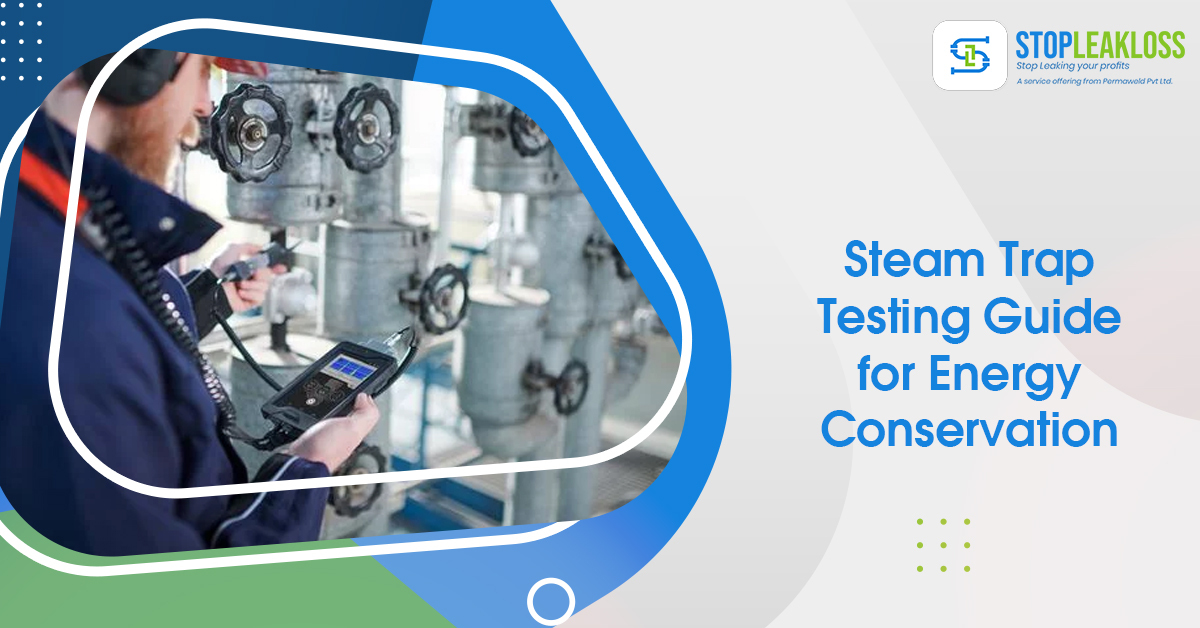
Steam Trap Testing Guide for Energy Conservation
Steam trap testing- This blog will explain the energy savings potential of steam traps and the energy, economic, and environmental reasons why an active steam trap maintenance programme is beneficial to the organisation’s bottom line. Each area will be discussed in detail, and some new services, products, techniques, and technology that may assist maintain or increasing the efficiency of steam systems.
Approximately half of the total energy required by industry is utilised to create steam, costing between $3 and $8 per 1,000 pounds. As a result, steam energy conservation must be a complete focus while steam trap testing, resulting in considerable savings. Steam energy conservation is also significant for other reasons, such as lowering environmental emissions. For any steam system to be energy efficient, each application’s suitable kind and size steam trap must be selected and installed.
This necessitates a commitment to educating individuals in charge of steam traps regularly. Finally, it’s critical to understand that a steam trap programme will minimise steam waste, which will reduce the quantity of fuel burnt and reduce pollutants produced.
Energy Impact for steam trap testing
Significant energy can be lost when steam leaks go undiscovered and unrepaired. The following example demonstrates how much. One steam trap (with 1/8″ hole) loses just 12 pounds of steam per hour (a leak so tiny that it is practically hard to detect with the naked eye) loses 288 pounds each day or 100,800 pounds during the 350 working days (or 8,400 hours) each year. It is unusual for a steam system to contain a thousand or more steam traps. Furthermore, a neglected steam system might have anywhere from 10% to 50% of the traps losing steam. Without a proper steam trap testing and maintenance programme, these failing traps may be neglected for years, regularly squandering vital moisture.
Steam trap testing
A steam system is intended to carry energy from a central site – the boiler – to remote places throughout the plant, building, or operational complex. A correctly built and maintained system may save energy, maintenance, and operating expenses by boosting system efficiency. This efficiency necessitates condensate removal from the pipe as soon as it occurs. Water travelling along the pipe’s bottom can be appropriately released using an automated valve known as a steam trap. A good steam trap must do more than merely remove condensate. It must reduce steam loss, have a long and dependable service life, resist corrosion, vent air and CO2, generate corrosive carbonic acid, work even in the presence of filth and scale, and operate against corruption.
Tools used for steam trap testing
Several trap manufacturers now provide proprietary tools to make trap testing more accessible, faster, and accurate. By sensing heat or measuring variables across the trap, these products aid in identifying potentially failed traps. In addition, some goods are intended for use with a specific type of trap. One company, for example, is currently promoting a system built exclusively for their inverted bucket steam trap testing.
While the web is online and in use, the products can assess circumstances in the trap in a couple of seconds. This innovative technique has various advantages. First, an initial steam trap assessment reveals that three out of every four steam traps at a plant are operational. To find the failed 25%, every web in the system has to be checked.
These steam trap testing kits make it possible to swiftly discover failed traps without spending hundreds of hours testing correctly operating traps. Field data demonstrate a 100 per cent accurate trap was reading for closed or blowing through traps. These innovative devices use a multi-sensing probe put into the bottom of an inverted bucket steam trap to monitor the condensate level under the bucket and the temperature of that condensate. The data from the probe may be processed by a PLC or a PC and relayed via modem hundreds of kilometres distant.



